
Samuel Hahnemann and the Beginnings of Homoeopathy
As a young physician Samuel Hahnemann experienced again and again how little he could achieve with the theoretical knowledge he had acquired. Disappointed, he withdrew from medical practice and, over the following years, made a name for himself as a translator and medical author.
When translating William Cullen’s Materia Medica in 1790 he came across the Simile Principle which he publicized for the first time in 1796, in the Journal der practischen Arzneykunde (Journal of practical medicine). In the ‘Rule of Similars’ Hahnemann thought to have discovered the foundation for the effective treatment method which he had been trying to find for many years.
In the decades that followed he meticulously investigated the effect of medicinal substances. He published the outcome of his observations in his Organon der rationellen Heilkunde (Organon of the Healing Art) in 1810, which, up to the present time, has remained every homoeopath’s mainstay.
During the great European cholera epidemic (1830 – 1832) homoeopathic treatment saved more lives than any other method. This overwhelming success won many people over to the new approach to healing.
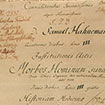
1755
born 10th April in Meißen/Germany the son of porcelain painter Christian Gottfried Hahnemann and his wife Johanna Christiane née Spieß
1775 – 1777
medical studies in Leipzig
1777
further studies in Vienna and first work experience
1779
doctorate in Erlangen/Germany
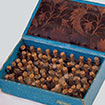
1780
first practice in Hettstedt near Halle/Saale
1782
marriage to Henriette Küchler in Dessau
1783 – 1785
public health officer in Gommern (near Magdeburg)
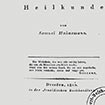
1785 – 1789
relocation to Dresden and opening of practice; work as coroner and registrar in Dresden municipal hospitals; growing dissatisfaction with orthodox medicine and temporary withdrawal from practice; translation of French and English medical and pharmaceutical writings; own scientific publications
1789 – 1790
relocation to Leipzig, then to Stötteritz near Leipzig; continuation of scientific research; translation of the Scottish physician William Cullen’s Materia Medica and self-experiments with cinchona bark
1792
relocation to Gotha, then Georgenthal; treatment of the insane F. A. Klockenbring, Secretary to the Chancellery of Hanover
1793 – 1796
residence in the German towns of Molschleben, Göttingen, Pyrmont, Wolfenbüttel, Braunschweig
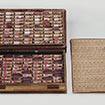
1796
Hahnemann phrases the central idea of the homoeopathic doctrine: similia similibus curentur (let like be cured by like)
1796 – 1805
residence in Königslutter, Altona, Hamburg, Mölln, Machern, Eilenburg, Schildau
1805 – 1811
medical practice in Torgau
1807
Hahnemann for the first time calls his approach to healing‘homoeopathy’
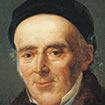
1810
publication Organon der rationellen Heilkunde (Organon of the Healing Art)
1811 – 1821
removal to Leipzig; habilitation and teaching; formation of a union of drug provers with his students
1820
the Leipzig apothecaries sue Hahnemann for dispensing his own medicines; Prince Karl Philipp of Schwarzenberg seeks homoeopathic treatment from Hahnemann
1821
relocation to Coethen; opening of a practice with the right to dispense his own medicines
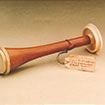
1822
Hahnemann’s appointment as court counsellor by Duke Ferdinand of Coethen
1829
50th anniversary of Hahnemann’s doctorate; foundation of the Verein zur Beförderung und Ausbildung der homöopathischen Heilkunst (Society for the promotion and development of homoeopathic medicine); money collection for the homoeopathic hospital in Leipzig
1830
Henriette Hahnemann dies
1835
Hahnemann marries the French painter Mélanie d’Hervilly-Gohier who is 45 years his junior; relocation to Paris and opening of joint homoeopathic practice which becomes famous all over Europe
1843
Hahnemann dies and is buried in the cemetery of Montmartre
In 1829, on the occasion of the 50th anniversary of Samuel Hahnemann’s doctorate, the Society for the promotion and development of homoeopathic medicine was founded in Coethen. From 1832 onwards, it was known as the Zentralverein homöopathischer Ärzte (Central Association of Homoeopathic Physicians). It had to face severe attacks, for example in connection with the high potencies, but is still in existence as the German Central Association of Homoeopathic Physicians.
The journal Allgemeine Homöopathische Zeitung, founded in 1832 by Hahnemann’s pupil Friedrich Rummel, served as the association’s internal discussion forum. In 2007 it celebrated its 175th anniversary.
In 1833 and 1888, the association founded a teaching and healing institute in Leipzig. Both times it had to be closed down again after a short time due to financial difficulties and quarrelling among the physicians. From 1842 the association maintained a polyclinic in Leipzig which existed up to its destruction in the war in 1943.
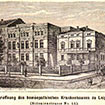
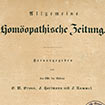
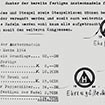
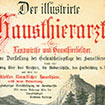
Before the invention of motor vehicles and tractors animals played a much more important part in agriculture and transport than they do today. In 1815 the Coburg court apothecary Donauer published the first veterinary homoeopathic paper: Suggestions for the more appropriate treatment of sick dogs. In 1829 Samuel Hahnemann spoke in front of farmers and veterinarians about homoeopathy in veterinary medicine postulating the exact observation of sick animals as well as careful investigation into and thorough knowledge of medicines.
In the 19th century, veterinarians were not everywhere permitted to treat animals homoeopathically because the method was still controversial. At the end of the century interest in animal homoeopathy subsided and was only rekindled in the 1920s. Today, demand is on the increase again and homoeopathy is used more frequently now in veterinary medicine.
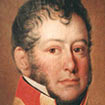
After the Organon of the Healing Art was published in 1810, public interest in homoeopathy grew stronger. When field marshal Prince Schwarzenberg, victor of the Battle of Leipzig, became Hahnemann’s patient in 1820, homoeopathy was the topic talk of the day.
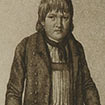
Kaspar Hauser was also treated homoeopathically. His Ansbach physician Paul Preu corresponded with Hahnemann. Since Hahnemann’s times homoeopathic treatment of famous patients has fanned curiosity about the method.
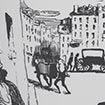
At the beginning of 1817, cholera broke out in India and spread unrelentingly to Europe reaching Moscow in 1830 and Berlin in 1831.
Some physicians, not knowing what else to do, decided to bleed the patients, who were very weak in any case. They treated them with high doses of mercury and opium and forbade them to drink.
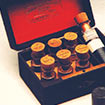
Hahnemann did not treat any cholera patients himself as the area around Coethen was spared from the epidemic. Soon after the outbreak of cholera he recommended, however, to treat it with camphor. He spoke against blood-letting and not allowing patients to drink. With this therapy many more patients survived than with the conventional method.
Due to the successful homoeopathic treatment of cholera homoeopathy fast gained popularity in many other places.



